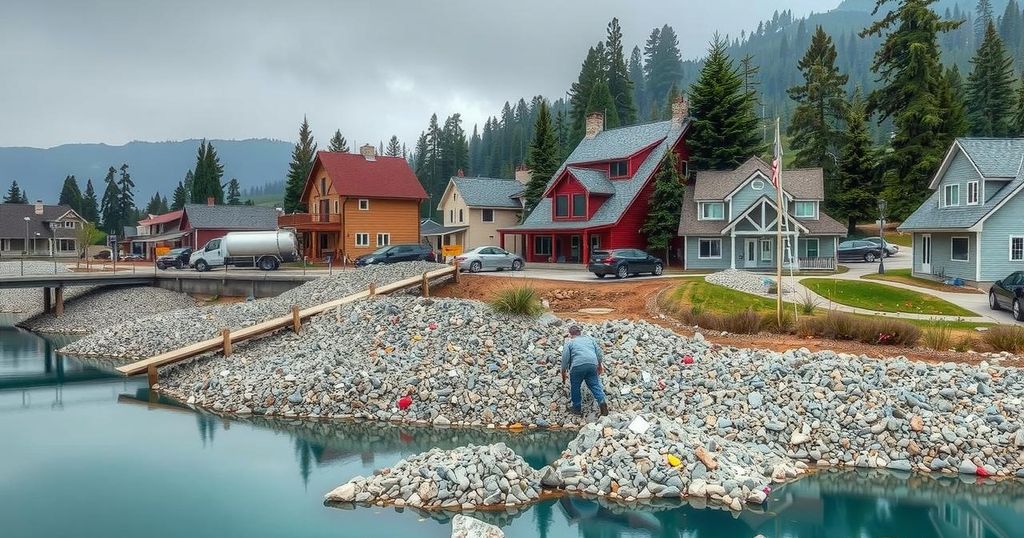Insights Gained from the 2020 Stanley Earthquake in Idaho
The 2020 Stanley earthquake in Idaho, measuring 6.5 on the Richter scale, prompted extensive research into the Sawtooth fault. The event revealed complexities in fault dynamics, including evidence of multi-fault ruptures and liquefaction effects at Stanley Lake. Current geological investigations are assessing past seismic activity, while lingering questions about fault behavior continue to drive further studies.
The 2020 Stanley earthquake, registering a magnitude of 6.5, represented a significant seismic event in Idaho, prompting extensive research on the Sawtooth fault. Initially recognized as an active fault, the complexities of this event further illuminated the area’s tectonic characteristics. The earthquake’s aftershocks and surface effects, such as liquefaction in Stanley Lake, have revealed new dimensions in our understanding of fault behavior, providing data crucial for future geological assessments.
Geologists faced challenges in data collection due to pandemic restrictions and weather conditions following the earthquake. Nevertheless, investigations have indicated that the Stanley earthquake involved a multi-fault rupture rather than a simple mechanism, with various proposed models depicting complex geometry. The aftermath has been thoroughly studied using temporary seismometers and detailed mapping of earthquake aftershocks, ultimately yielding insights into the depth and nature of the faulting that occurred.
In addition to studying aftershocks, researchers have utilized advanced lidar technology to depict the Sawtooth fault’s structure in detail, revealing it as a complex fault zone rather than a single line. Paleoseismic trenching has provided historical data, indicating prior seismic activity along the fault dating back thousands of years. Evidence from sediment cores in local lakes has also offered invaluable insights into the earthquake history associated with the Sawtooth fault.
While advancements in knowledge regarding the Sawtooth fault and its associated seismic events have been made, significant questions persist. Understanding whether the entire fault can rupture simultaneously or the frequency and impact of smaller earthquakes on different segments remains a key focus for ongoing research. As scientists continue to gather and analyze data, they aim to enhance their comprehension of this critical geological region in central Idaho.
The Stanley earthquake of March 31, 2020, resulted in substantial seismic activity, marking it as Idaho’s second-largest quake. It arose from the tectonic complexities of the Sawtooth fault within the Centennial Tectonic Belt, which is affected by geological influences from the nearby Yellowstone hotspot. The event prompted a surge of research aimed at unraveling the intricacies of this fault system. In the aftermath, scientists worked to understand both the immediate impacts and the broader geological implications of the earthquake.
The lessons drawn from the Stanley earthquake underscore the importance of ongoing geological research in understanding fault behavior. The complexity of the earthquake showcased the intricate nature of seismic events and the necessity for advanced data collection methods. As researchers continue to explore and analyze the Sawtooth fault, their work not only enhances immediate geological understanding but also serves as a foundational pillar for future studies and preparedness in seismically active regions.
Original Source: idahocapitalsun.com




Post Comment